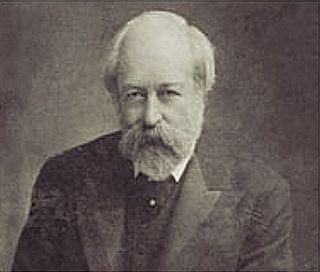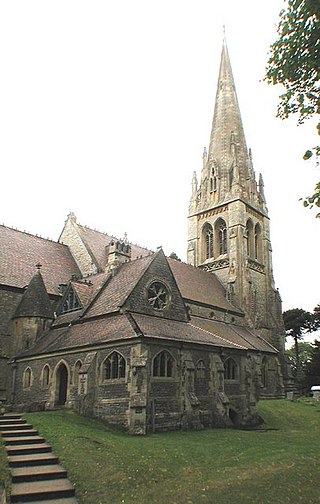
George Frederick Bodley was an English Gothic Revival architect. He was a pupil of Sir George Gilbert Scott, and worked in partnership with Thomas Garner for much of his career. He was one of the founders of Watts & Co.
John Oldrid Scott was a British architect.

Sir Arthur William Blomfield was an English architect. He became president of the Architectural Association in 1861; a Fellow of the Royal Institute of British Architects in 1867 and vice-president of the RIBA in 1886. He was educated at Trinity College, Cambridge, where he studied Architecture.
Samuel Sanders Teulon was an English Gothic Revival architect, noted for his use of polychrome brickwork and the complex planning of his buildings.
Daniel Robertson was a British architect.
Benjamin Ferrey FSA FRIBA was an English architect who worked mostly in the Gothic Revival.

Henry Woodyer (1816–1896) was an English architect, a pupil of William Butterfield and a disciple of A. W. N. Pugin and the Ecclesiologists.
Henry Jones Underwood (1804–1852) was an English architect who spent most of his career in Oxford. He was the brother of the architects Charles Underwood and George Allen Underwood.

Charles Buckeridge was a British Gothic Revival architect who trained as a pupil of Sir George Gilbert Scott. He practised in Oxford 1856–68 and in London from 1869. He was made an Associate of the Royal Institute of British Architects in 1861.
Clapton Crabb Rolfe was an English Gothic Revival architect whose practice was based in Oxford.
Richard Pace was a Georgian builder and architect in Lechlade, Gloucestershire, England. He served in the Life Guards 1784-88. Most of his known commissions were houses, in many cases for Church of England clergy. He also restored or refitted a small number of Church of England parish churches. He is commemorated by a monument in St. Lawrence's parish churchyard, Lechlade.
Harry George Walter Drinkwater (1844–1895) was an English architect who practised in and around Oxford. His work included several churches and public houses.
Joseph Clarke (1819–1888) was a British Gothic Revival architect who practised in London, England.
Edwin Dolby was an English Victorian architect who practised in Abingdon. His works include the design of Abingdon School.
Alfred Mardon Mowbray (1849–1915) was an English Gothic Revival architect who practiced in Oxford and Eastbourne from the 1860s to the 1900s.
Charles Nightingale Beazley (1834–97), was a British architect. His work spans the period 1853–97.

John Billing, FRIBA was an English architect from Reading, Berkshire. His grandfather Richard Billing, father Richard Billing (1784–1853), brothers Richard (1814–84) and Arthur (1824–96) and nephew Arthur Ernest were also architects.
John West Hugall was an English Gothic Revival architect from Yorkshire.
Walter Edward Mills was an English architect.
John Berry Clacy (1810–80) was a Victorian architect whose practice was centred on Reading and Wokingham in the English county of Berkshire.





